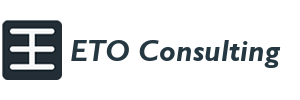
In previous blogs, we looked at statistics and how water.org used public data to build a compelling statistic for their communications. Today I wanted to take a brief moment to explain why I am so obsessed with finding good stats for companies and nonprofits.
Learn from my mistakes
I learned a painful lesson when I was teaching my first college course. As a graduate student, puffed up with all the new theories and fancy words I possessed, I was eager to share all that I knew with my classes. The first time I tried to hold forth in my classroom on an oh so vital topic for which I prepared ten pages of notes, I could feel the energy in the room just evaporate. Twenty young students who were eager to learn got bombarded by my lecture, and I will never forget how their body language told me how bad I sucked as a teacher that day. No matter how impressed I was with my own knowledge, I had never bothered to think about how much my audience wanted to be in control of their journey toward knowledge.
How many times does this happen? We get so satisfied with what we know, that we don’t consider how to translate that knowledge into a fun, interactive and engaging journey for the people who want to know what we do and why it is important.
Mind the information gap
The fundamental mistake most people make in presenting what their company does or what issue their nonprofit handles is what I cause the “fire hose effect.” It’s what I did to those students in my class and what many people experience when they view a website, hear a pitch, or receive an email. Are they being asked to drink from a fire hose of information from you? Are they being brought into a journey or are they being forced to sit and listen?
The reason I believe in proper use of statistics is that a good statistic has the power to produce an information gap in people’s brains. This is important because we know from studies about the brain that creating this gap is what stimulates our curiosity. This new information creates a craving for knowledge to fill in that gap through an actual chemical reaction that is akin to the craving we have for food. (Read the study on information gap to learn more)
One more thing
It’s not the amount of information that matters in this case, it’s how artfully we present it that makes us intensely curious. The lesson for businesses and nonprofits is to take a second look at your site, materials and pitches to see if you are creating an information gap that leads people crave more details.
Statistics aren’t the only way to produce an information gap. Want to know what the other way is to get people to be interested in your information? Ask an interesting question…

